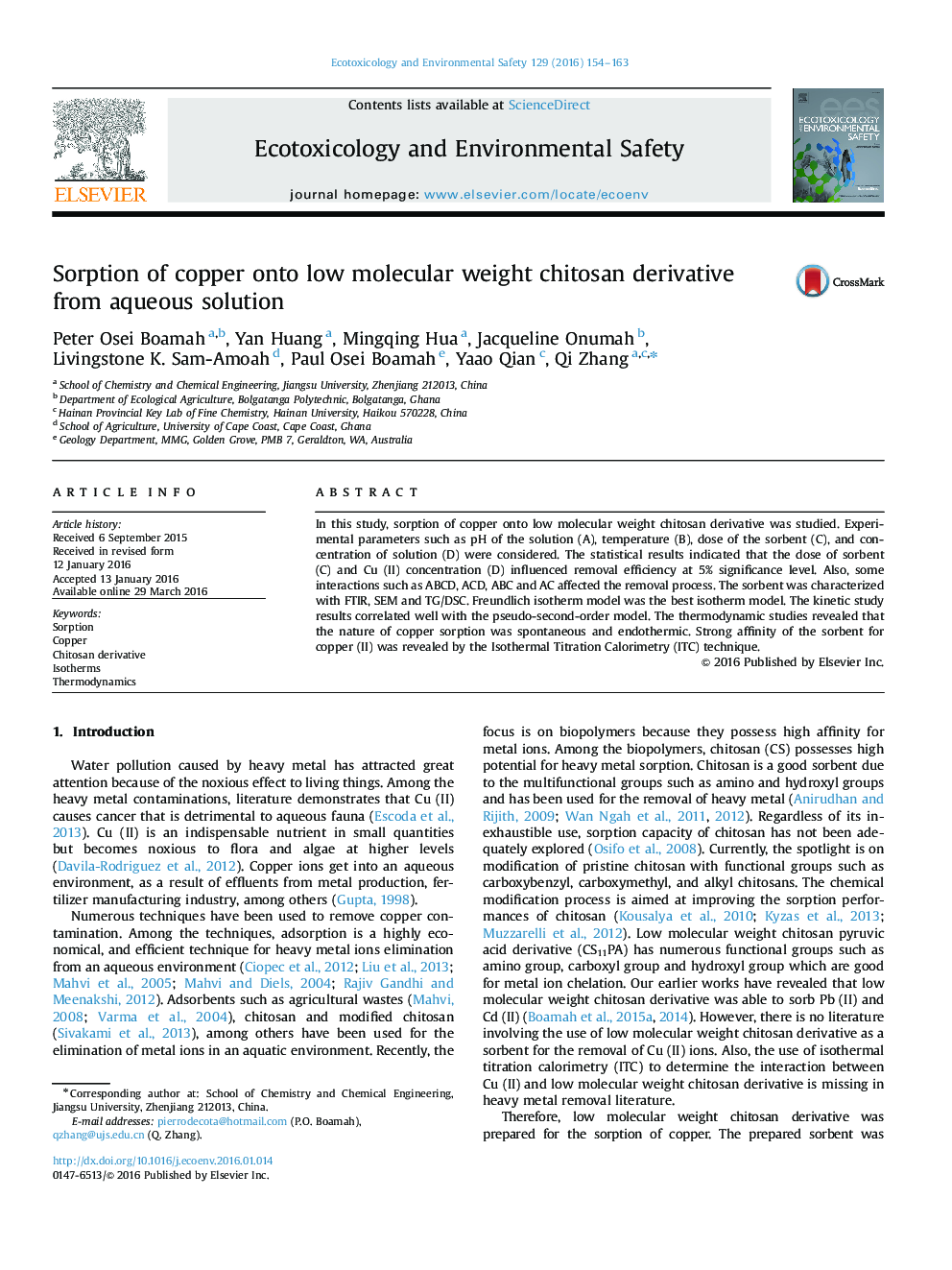| Article ID | Journal | Published Year | Pages | File Type |
|---|---|---|---|---|
| 4419263 | Ecotoxicology and Environmental Safety | 2016 | 10 Pages |
•Chitosan derivative was characterized with FTIR, SEM and TG/DSC.•Chitosan derivative was useful in the removal of Cu (II).•Freundlich isotherm model was the best isotherm model.
In this study, sorption of copper onto low molecular weight chitosan derivative was studied. Experimental parameters such as pH of the solution (A), temperature (B), dose of the sorbent (C), and concentration of solution (D) were considered. The statistical results indicated that the dose of sorbent (C) and Cu (II) concentration (D) influenced removal efficiency at 5% significance level. Also, some interactions such as ABCD, ACD, ABC and AC affected the removal process. The sorbent was characterized with FTIR, SEM and TG/DSC. Freundlich isotherm model was the best isotherm model. The kinetic study results correlated well with the pseudo-second-order model. The thermodynamic studies revealed that the nature of copper sorption was spontaneous and endothermic. Strong affinity of the sorbent for copper (II) was revealed by the Isothermal Titration Calorimetry (ITC) technique.
